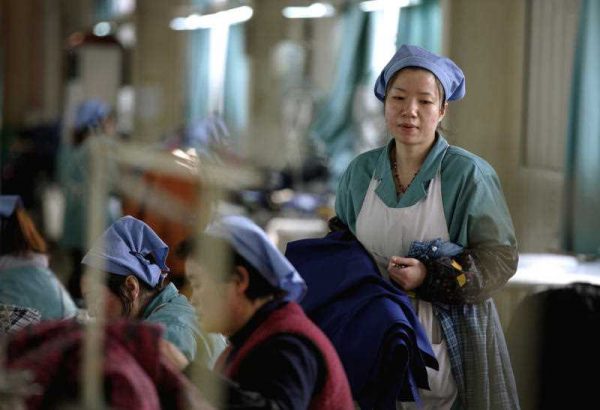Following the global financial crisis of 2008, the Chinese government moved quickly to implement a large-scale stimulus package of as much as 4 trillion yuan (about US$586 billion). This involved ambitious investment in infrastructure and manufacturing, as well as loose monetary policy. As a result, the Chinese economy — which became the world’s second largest after the US in 2010 — grew at a fast pace until 2012.
But the large stimulus package also had numerous negative effects on the Chinese economy. It created overcapacity in labour-intensive traditional industries and also in high value-added emerging industries. The stimulus also led to an oversupply of liquidity, which created a huge bubble in the real estate market. Local governments worry that if prices start to drop rapidly, the proportion of nonperforming debt held by commercial banks and financial institutions will sharply increase. And the stimulus spending, combined with the oversupply of money, has sent local government debt soaring. If this debt is not properly managed, a regional banking crisis could eventually destabilise the national banking system.
The combined effects of these three factors have dented the dynamic growth of the Chinese economy in recent years. But while the Chinese economy is slowing, there are factors that will help maintain growth of at least 7 per cent a year.
China has great scope for expansion in both production and consumption. The rise of e-commerce in China has greatly aided the transformation of the Chinese economy to a model based on domestic consumption and services. Rapid urbanisation and the growth of the middle class will continue to provide a big boost. The central government is able to mobilise adequate resources to deal with a crisis or systemic risk caused by bad debt or shadow banking. The US economy is getting stronger, giving an extra boost to the global economy and the Chinese economy. And crude oil prices are dropping; if they fall below US$60 a barrel (which seems likely), the Chinese economy will benefit from lower production costs. Meanwhile, President Xi Jinping’s government has strengthened China’s economic diplomacy. China’s ‘New Silk Road’ initiatives (named China’s Marshall Plan by Western media) aim to tap the growth potential of other countries in the region, which will further boost the Chinese, regional and global economies.
The Chinese leadership under Xi announced a 60-point reform program at the 18th Party Congress in late 2013. Though some progress has been made, implementation of the reforms has been difficult. The mode of growth and governance has not changed very much over the past year.
There has been a lot of discussion about the reforms that need to be undertaken. The government needs to speed up deregulation and limit government approval for investment in order to let the market allocate resources. The government should be limited to the role of regulator and not an investor; investment should be governed by market forces. The government must also reform SOEs and cultivate a truly mixed economy by attracting private capital into SOEs. They should push financial reforms, including the marketisation of interest rates and exchange rates. Since oversized SOEs have privileged access to bank loans, privately-owned enterprises hope that these reforms can reduce their own financing costs.
If market-oriented reforms like these are implemented smoothly, they would give a powerful push to the economy. So far, progress has been limited, and the reforms need more momentum. The leadership in Beijing recognises that it needs to move quickly to achieve its goals in order to deal with external competition (such as the US-led Trans-Pacific Partnership) and domestic pressure to sustain growth. As in past cases of reform, balancing economic goals (the rise of the private sector) and political goals (keeping the Chinese Communist Party in power) will continue to pose a challenge for Chinese leaders.
In 2015, China’s economic growth will be shaped by two opposing forces. Given the circumstances of the new normal, it is unlikely China will be able to manage growth of 7.5 per cent or above. But we can be cautiously optimistic that 7 per cent growth is possible and sustainable. At the same time, we should watch carefully for the risks that could be a barrier to growth: overcapacity, a drastic fall in property prices, and a worsening international environment.
2015 will likely see the Chinese economy achieving slower but steady growth of about 7 percent or even a little bit higher, which is still higher than other major economies, despite the downside pressures. In short, welcome to the new normal.
Wang Yong is a professor at the School of International Studies, Peking University, and director, the Center for International Political Economy, at the university. He is also a member of Global Asia’s editorial board.
The full version of this essay was originally published in the journal of Global Asia, Vol.9, No.4, Winter 2014.


China is likely getting a lot less than 6.5per cent growth. I would bet that China is actually very close to contraction. They have a huge debt to GDP ratio. They have a demographic bomb going off. They have had a HUGE amount of malinvestment since 2009. A lot of what they built is either useless, going to be useless or so poorly built it is not going to last long enough to provide any return. No….I think China is as hosed as the rest of the world and maybe more so.